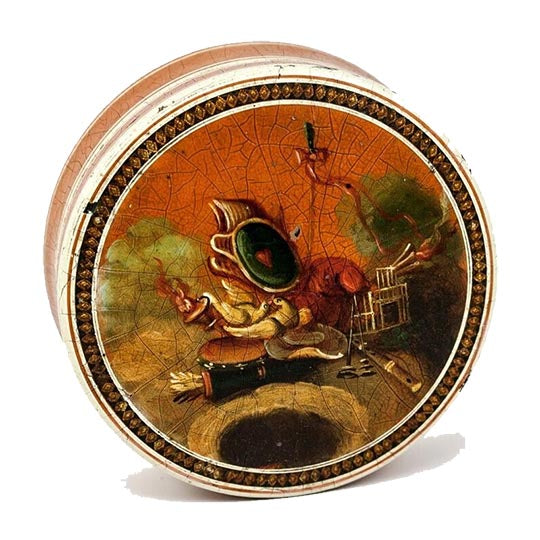
La Tabatière
Share
Tabatières, or snuffboxes, were a popular accessory in the 18th century, particularly in France. These small, often ornate boxes were used to hold and carry powdered tobacco, which was sniffed or inhaled. Several types of tabatières were popular during that time, let us take a look at the most popular styles.

The Vernis Martin style was named after the Martin brothers, who were famous for their decorative lacquer work. These tabatières featured intricate scenes and designs painted on a varnished surface, often with gold or silver accents. They were highly sought after and considered a mark of luxury.

Gold snuffboxes were highly prized possessions during the 18th century. They were usually made of solid gold or gold-plated silver and often adorned with precious gemstones, enamel work, or miniature paintings. These boxes were symbols of wealth and status.

Tabatières made from tortoiseshell were another popular choice. Tortoiseshell was a material obtained from the shells of sea turtles and had a distinctive pattern. These boxes were often embellished with metalwork, inlays of precious materials, or engraved designs.

Porcelain tabatières gained popularity during the 18th century. They were crafted from fine porcelain and painted with intricate scenes or delicate floral patterns. Some porcelain snuffboxes featured hand-painted miniatures, making them highly prized collector's items.

Papier-mâché snuffboxes were a more affordable option for those who couldn't afford the luxury of gold or porcelain. These boxes were made by layering paper and glue to create a sturdy material, which was then decorated with painted designs or covered in printed paper. They often had a lacquered finish to give them a polished appearance.
These are just a few examples of popular tabatières in 18th century France. The styles and designs varied greatly, and individuals could choose boxes that suited their personal tastes, budget, and social status.
